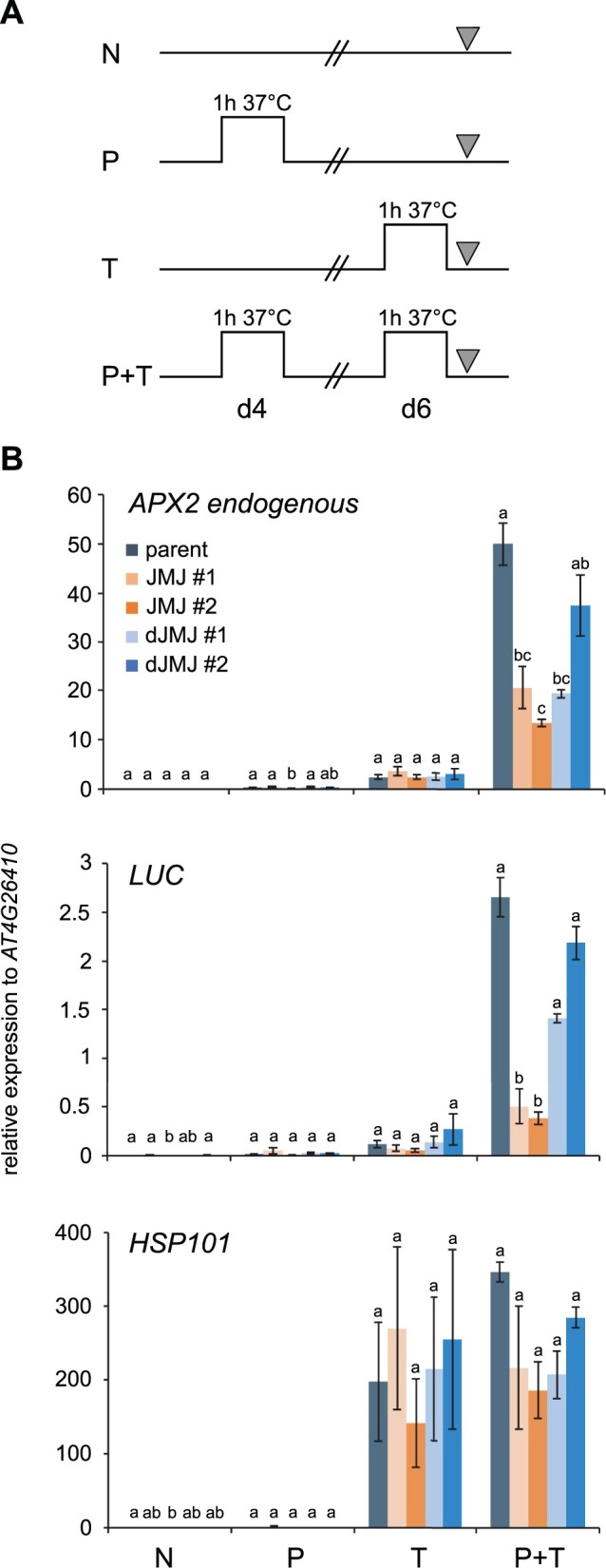This is a correction to: Vicky Oberkofler, Isabel Bäurle, Inducible epigenome editing probes for the role of histone H3K4 methylation in Arabidopsis heat stress memory, Plant Physiology, Volume 189, Issue 2, June 2022, Pages 703–714, https://doi.org/10.1093/plphys/kiac113
The authors state that due to a software error converting Figure 4 from one file type to another, several of the letters in panel B shifted out of place in the version of the file sent to production. Upon noticing the error, the authors submitted a revised figure containing realigned letters as part of their proof corrections that was mistakenly not included in the final, published version of the article. The revised figure 4 appears below and has been replaced in the article.
Figure 4.

Type II transcriptional memory of endogenous APX2 and pAPX2::LUC after recurrent HS is reduced in dCas9–JMJ lines. A, Treatment scheme for RT-qPCR-based type II transcriptional memory assay. Four-day-old seedlings were either exposed to priming HS (P) on Day 4, exposed to a triggering HS (T) on Day 6, exposed to a priming and a triggering HS (P + T), or not exposed to any HS (N). All samples were taken on d6 corresponding to the end of the HS treatment. B, Transcript levels of endogenous APX2 (At3g09640), LUC (pAPX2600 bp::LUC), and HSP101 (At1g74310) in parent, two dCas9–JMJ lines (JMJ #1 and JMJ #2), and two dCas9-dJMJ lines (dJMJ #1 and dJMJ #2) as measured by RT-qPCR. Expression values are relative to At4g26410. Data are mean ± sem of three independent experiments. Transcript levels were statistically evaluated for all genotypes within each time point by Tukey’s HSD (P < 0.05). Genotypes are assigned one or more letters based on their statistical group. Genotypes sharing one letter are not significantly different.


